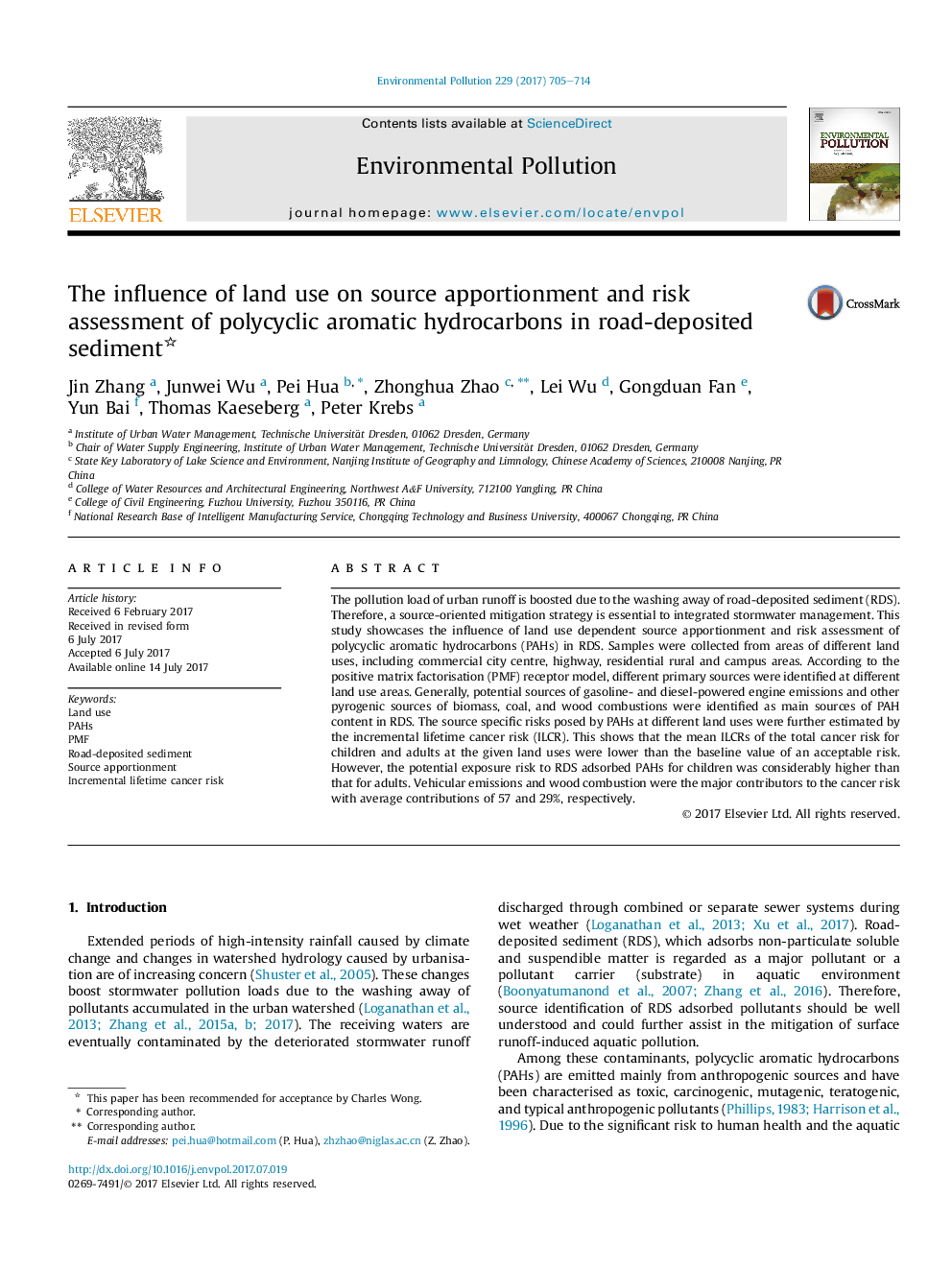| Article ID | Journal | Published Year | Pages | File Type |
|---|---|---|---|---|
| 5748818 | Environmental Pollution | 2017 | 10 Pages |
â¢Elevated PAH contents in RDS were observed at a commercial area.â¢Different PAH sources were identified by PMF model at different land uses.â¢Pyrogenic sources were the primary contributors to PAHs in RDS.â¢Potential health risk for children exposed to RDS were higher than that for adults.
The pollution load of urban runoff is boosted due to the washing away of road-deposited sediment (RDS). Therefore, a source-oriented mitigation strategy is essential to integrated stormwater management. This study showcases the influence of land use dependent source apportionment and risk assessment of polycyclic aromatic hydrocarbons (PAHs) in RDS. Samples were collected from areas of different land uses, including commercial city centre, highway, residential rural and campus areas. According to the positive matrix factorisation (PMF) receptor model, different primary sources were identified at different land use areas. Generally, potential sources of gasoline- and diesel-powered engine emissions and other pyrogenic sources of biomass, coal, and wood combustions were identified as main sources of PAH content in RDS. The source specific risks posed by PAHs at different land uses were further estimated by the incremental lifetime cancer risk (ILCR). This shows that the mean ILCRs of the total cancer risk for children and adults at the given land uses were lower than the baseline value of an acceptable risk. However, the potential exposure risk to RDS adsorbed PAHs for children was considerably higher than that for adults. Vehicular emissions and wood combustion were the major contributors to the cancer risk with average contributions of 57 and 29%, respectively.
Graphical abstractDownload high-res image (286KB)Download full-size image
